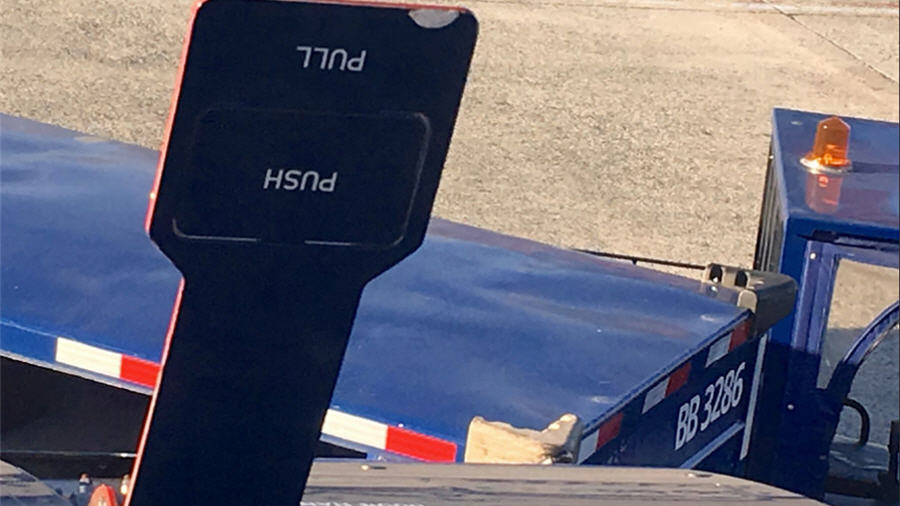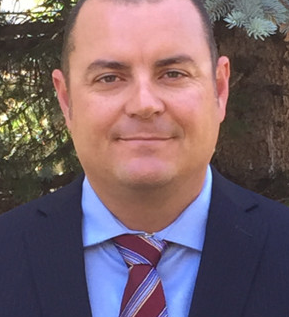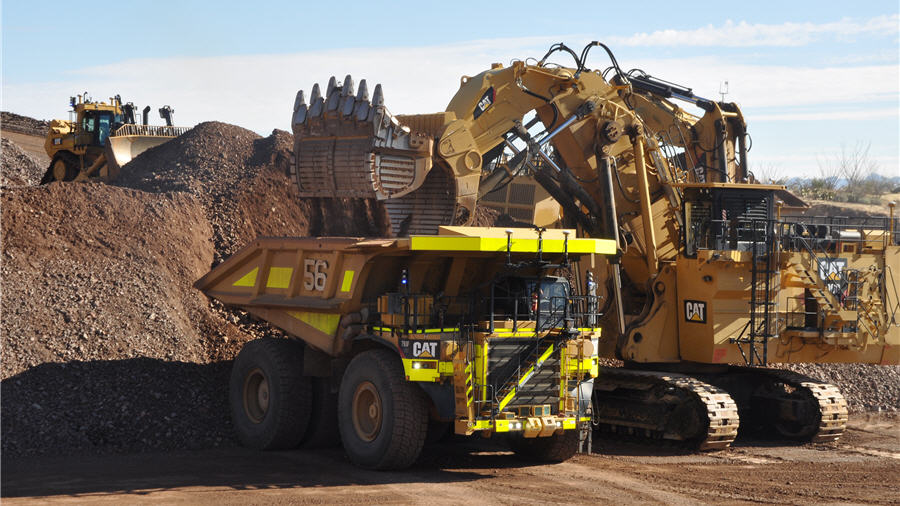
Autonomous trucks are no longer an up-sell, says Caterpillar’s Craig Watkins, commercial manager for a surface mining technology.
The technology has gained traction and customers are asking for them, said Watkins during an interview with MINING.com at the CIM Convention 2018 held this past May.
“One of the key changes that’s happened over the last year or so is that we have gone from a push scenario where we’ve been trying to educate the industry of the value and the benefit of automated hauling solutions,” says Watkins.
“We’ve crested that hill and we’re starting to get a lot of pull. [Customers] are getting a better grip on the economics of it, and so they’re starting to pull hard.”
Interview was edited for clarity:

Caterpillar’s Craig Watkins, commercial manager for a surface mining technology
MINING.com: Can you tell me about the state of autonomous trucks at Caterpillar?
Craig Watkins: Velocity. The momentum is growing very rapidly right now. One of the key changes that’s happened over the last year or so is that we have gone from a push scenario where we’ve been trying to educate the industry on the value and benefit of automated hauling solutions and now we’ve crested that hill a little bit and we’re starting to get a lot of pull. People are understanding the benefits. They’re seeing what other companies are realizing in terms of benefits. They’re getting a little bit of a better grip on the economics, and they’re starting to pull hard.
MINING.com: What are the benefits? What are companies seeing?
Craig Watkins: Utilization. You get a lot more utilization out of the equipment, on average about two and a half hour per day of increased utilization. That’s not necessarily unique to us. How much more am I going to produce because of automation? It’s not only more but consistency in production. When you remove variation you become more predictable. You don’t have to have spare trucks, an extra digger or wheel loader on standby. You can optimize your capital.
MINING.com: Have the benefits changed in the minds of the customer? Safety used to the main driver.
Craig Watkins: No, safety is still one of the major benefits. Safety comes with it because you’re removing people from the environment and exposure to heavy equipment. You can’t have a safety incident when you have no people involved.
The safety aspect is table stakes. It’s just a requirement and it always has been.
The safety aspect is table stakes. It’s just a requirement and it always has been.
Back in the day safety was the benefit that you got. We’ve matured now. In addition to safety we’re driving faster than the average-staffed fleet. We’re moving more material, and [the equipment is] being utilized more. That safety factor has always been there. It’s improved in the sense that one of the metrics that we keep track of is how many people per truck it takes to staff. If you think about a manually-operated truck, you need about four-and-a-half people. That’s the metric that we’ve used to help articulate not only the safety component but also the economics behind labour. Within the last month we’ve dropped below 0.8 people per truck. Where you once had a truck operator you now have a controller, a builder, a pit tech and somebody taking care of the wireless infrastructure. We’ve gone from four and a half people to 0.8 people. [Mines with automation] are starting to look at shifts differently. People now have a little bit more family and life balance.
You now get a [change to the] workforce. More people are getting higher education. Fewer people want to operate a mechanical piece of equipment for 12-hours a day. So the migration to automation is in line with the education level that people are attaining, and I think that fundamental change is underway. Every one of us needs to be more productive and produce more so we can have a better quality of life.
As automation [gains more market penetration], standard considerations for mine planning changes. What size diggers do I need? What size trucks do I need? What is the haul road layout going to be? What’s is the ore profile?
One of the components that [miners are considering] is: do I have manually-operated equipment or do I have automated equipment? Do I start a migration from manual to automated? A lot of activity we have underway is at greenfield sites that are two- or three-years out. At brownfield operations it is a little bit different, because we have equipment that is at its half-life or mid-life. The equipment isn’t current models, but operators still want to automate them. We got a lot of pull in both of those types of operations. The 793D, for example, is not necessarily autonomy-ready, but we have a lot of market pull to automate it. There’s a lot of customers that operate these models and are still going to have him for a few years.

Rollin’ without a driver. Photo courtesy of Caterpillar.
MINING.com: Are there late adopters and early adopters for mine automation?
Craig Watkins: Western Australia and iron ore mining is the leader. That’s where all the development has been. The oil sands have been really heating up, and we’re also working on deep pit operations. There’s a new challenge with every one of those. With the oil sands you deal with tire ruts and spring thaw. It’s different dynamics with bigger trucks. That stuff is not too bad for us to figure out and overcome. It’s more around understanding what’s a rut and what’s an obstacle.
The strongest emerging pull right now is the oil sands. Deep pit in South America is also really starting to pull hard.
The strongest emerging pull right now is the oil sands. Deep pit in South America is also really starting to pull hard. We’ve got to address the positioning challenge [with deep surface mines]. When you use satellite-based positioning and you get into deep pit environments, you can mask a lot of the satellites. A lot of our energy and investments is in making sure this equipment all has solid positioning all the time, no matter the condition. We’ve evolved through the years where we just aren’t reliant on satellites to help us understand where we are. That reduces our reliance on the infrastructure and it further increases the availability of the equipment or the utilization of it. That’s where the pull is. We are now putting strategies in place to automate the entire hauling fleet and develop a roadmap.

No drivers in the autonomous truck and remotely controlled dozer. Photo courtesy of Caterpillar.
MINING.com: What changes are you seeing at mines now that there is more autonomy?
Craig Watkins: The journey is just starting. At green fields miners are starting to think about strip ratio and building roads: “Can we build narrower roads? My roads are costing me a million dollars per kilometer. Can I get a little tighter when building the new road?”
We did a massive project that almost lasted us a whole year last year with a big multinational miner where they came to us and asked us to help build their new mine. We had representatives from the drill product group, the truck product group and then some supporting teams and data analytics all working through their mine plan and design. In an environment where its normally “400-tonne trucks, rope shovels and git’r done”, we’ve shifted the paradigm. We showed them the benefit of going with much smaller trucks. The mine is still a few years out. We will see where we end up on that one but that will be a big success story. That will be the first example of where we all went in together and we completely wiped the canvas clean and said here’s the capability we have and here’s the capability we know we will have by this time so lets design and build the mine around that.
MINING.com: Are the vehicles going to be changing their configuration now there won’t be humans in them?
Craig Watkins: No, not yet. I don’t think the markets ready. We are reducing the weight on trucks, but the cabs are not leaving the vehicles just yet.
MINING.com: If automation is coming to mines, what’s the human resources challenge? Who are the people mines must hire? What is the skill set?
Craig Watkins: The best people you can get are those with operational experience. People who have gotten their boots on the ground, seen the interactions and understand the environment.
The best people you can get are those with operational experience. People who have gotten their boots on the ground, seen the interactions and understand the environment.
They seem to be the strongest resources you can get. We try and up-skill a lot of equipment operators. It’s not like people are coming out of school with an education in fleet management systems or in automated haulage systems. You’ve really got to focus on the application then look at the individual talents to try and bring the right people in. I think everybody is kind of experimenting a fair bit. Then you’ve got the social license to operate. You need to manage all that. The community has got to be involved in the whole process. There haven’t been any real show stoppers for us. You know if we can all be at home with our families and still do our jobs then there is a lot more pull for that. I don’t think people like spending time away as much as they used.
Creative Commons image of push and pull handle courtesy of Alan Levine